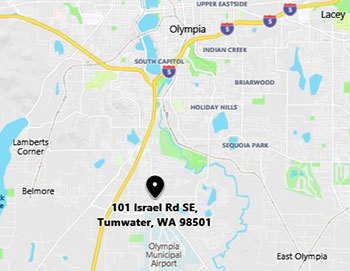The Authority of the Washington State Board of Health
State law provides the Board with authority to adopt rules related to isolation and quarantine to protect the health and well-being of the public by controlling communicable diseases. The Board has adopted rules relating to the use of, procedures for, and due process requirements of isolation and quarantine in WAC 246-100-040 through WAC 246-100-065. The Board has had the authority over isolation and quarantine since 1901.
The Board’s rules were updated in 2003. The purpose of that update was to establish uniform rules that provide guidance to first-responders in the event of bioterrorism attack, chemical, or radiologic attack, or major infectious disease outbreak regarding the enforceability of local health officers' orders. The rules include procedures that local health officers must follow and outline the due process rights of individuals subject to isolation or quarantine orders.
Isolation and Quarantine Overview
The authority to request a person to involuntarily isolate or quarantine an individual rests with local health officers. Each local health jurisdiction has plans and processes in place should involuntary isolation or quarantine be needed. These processes and plans must align with the procedures and due process requirements in Board rule. Local health officers rarely order isolation and quarantine and would only as a last resort when someone is intentionally putting others at risk and voluntary isolation or quarantine is not achieved.
Isolation describes when someone who has a communicable disease stays home and away from others (including household members) to avoid spreading their illness. "Isolation" means the separation, for the period of communicability or contamination, of infected or contaminated persons or animals from others in such places and under such conditions as to prevent or limit the direct or indirect transmission of the infectious agent or contaminant from those infected or contaminated to those who are susceptible or who may spread the agent or contaminant to others.
Quarantine describes when someone who has been exposed to a communicable disease stays home and away from others for the recommended period of time in case they were infected and are contagious. Quarantine can become isolation if a person later tests positive for a communicable disease or develops symptoms. "Quarantine" means the limitation of freedom of movement of such well persons or domestic animals as have been exposed to, or are suspected to have been exposed to, an infectious agent, for a period of time not longer than the longest usual incubation period of the infectious agent, in such manner as to prevent effective contact with those not so exposed.
Isolation and quarantine are key public health strategies to reduce the spread of communicable diseases.
Voluntary Isolation and Quarantine
If someone cannot safely isolate or quarantine themselves at home, they may be able to voluntarily do so at a health care facility or at a safe and secure location provided by their local health jurisdictions or Washington state.
If a local quarantine or isolation site is unavailable or local officials are unable to house an individual, the state may provide a isolation and quarantine site that offers individuals a safe, secure, and comfortable place to do so.
Involuntary Isolation and Quarantine
The decision to exercise involuntary isolation or quarantine typically resides at the local health officer level. However, the State Health Officer/Secretary of Health can exercise these powers if an emergency exists and the local health officer fails to act. The order can require someone who needs to isolate or quarantine for a disease to stay home, in a hotel, a publicly provided accommodation, or other such arrangement.
The answer to the question of will involuntary isolation or quarantine be used is based on the circumstances and the judgment of the state and local health officers. Involuntary isolation and quarantine would be the absolute very last resort and done so in the best interest of public health, safety, and protection of the community that person may come in contact with.
Additional Resources
- Some history on public health and isolation & quarantine https://www.cdc.gov/quarantine/quarantineisolation.html
- Involuntary isolation and quarantine guidelines for local health officers https://www.doh.wa.gov/ForPublicHealthandHealthcareProviders/EmergencyPreparedness/IsolationandQuarantine


